From the Yellow Pages to The Wall Street Journal, Carol Lay’s comic book career has taken many unlikely turns. Her works have turned up in LA Weekly, The New Yorker, The Wall Street Journal, and in a veritable Who’s Who of major publications. Her regular strip, Lay Lines, appears on gocomics.com. But for AHOY, she’s doing something entirely new: Short stories! She spoke recently with Hart Seely, after smoke from California wildfires had chased her from her home.
How’s the air?
Right now, I’m out of the smoke. I had to head to Tahoe for a few days.
How bad was it?
The other day it hit “Hazardous” levels. I just decided that I’d rather breathe. Tahoe is about two hours from where I live, and it still has pine trees.
You know, we are both baby boomers, the most hated generation on the planet.
We deserve it.
I know a guy whose goal in life is to watch the last boomer die.
Okay, but why are we so hated? I don’t get it.
Well, they’re going to blame us for Trump.
I’m glad to hear non-Boomers who didn’t vote are off the hook.
You’re from Whittier, California, right? That’s where Richard Nixon grew up.
I was born in Whittier Hospital. But we kind of bounced around Orange County. It was a very conservative area, and the great light that I could glean was when I picked up MAD Magazine. Also, when I was graduating high school, a guy came up and showed me the National Lampoon. I was like, wow! Then I went to UCLA, where everything started coming fast and furious. Zap Comix, Frank Zappa…
This may be an overly romanticized view, but I can’t imagine a cooler place to be than UCLA in the early seventies.
It was pretty cool. You could go to the student union, and George Carlin would be performing. You’d be walking in the quad and hear Doc Severinsen’s Big Band. Or film night, anywhere. That’s where I caught up with the Marx Brothers, Cool Hand Luke, the classics. I majored in fine art, but at UCLA, I found out that fine art wasn’t for me.
You were a painter?
I did it all. But it wasn’t until I tried comic books that I thought, This is it! Comics are a hybrid of writing and drawing, and I loved the puzzle of it.
Is it true you once drew for the Yellow Pages?
My first art job after college.
When I think of Yellow Pages drawings, I draw a blank. What did you do?
Technical drawings—a commercial refrigerator, a dump truck, a carpet cleaner. The job on the Yellow Page ads taught me a lot: How to use a mechanical pen, how to operate the Photostat camera, how to use typeset lettering, stuff like that. I learned about production by doing everything, and it all came in handy later. That got me into the photo lettering companies, which taught me things that were useful when I started lettering comic books.
I can still remember the first time somebody sent me this beautiful piece of comic book art, and I was terrified that I might spill a bottle of ink on it. I had this fear of the page. There was only one way through it—just do it. Now, though, I have no fear, because I do everything digitally, and there is always the “undo” button.
Interesting phrase, “fear of the page.” Is that something artists get?
Actually, I’ve never really brought it up before. I don’t know if anybody else has it.
I think it exists for writers. But I’ve never heard the phrase.
It’s different with writing, because in that case, you’re afraid of your own brain. But putting ink on paper, I was afraid of screwing up and making more work for somebody. Thankfully, I never did.
At one point, you did movie story boards.
Yeah, Back to the Beach and Top Secret. Those are the ones people actually might have heard of.
Hey, I saw Back to the Beach in a theater! It got two thumbs up from Siskel and Ebert.
It did? Huh. I thought it was a mess. I mean, they were constantly rewriting, even into production.
Frankie Avalon. Annette Funicello.
I met them both, Frankie and Annette.
What were they like?
They were like… people. I also got to meet Charles Durning and Ann-Margret on a bad film in Texas.
Wow. I’ve got nothing to match that.
Yeah, but I never had anything to say to them, besides, “Oh, I love your work!” You say that, and then get out of their hair. Small talk is so torturous.
But how did you get from the Yellow Pages to the movies?
Six degrees of separation. You gotta know somebody.
People here in Syracuse think everybody in California hangs out with celebrities.
Well, I actually had a TV star living right next door.
Really, who?
I’d rather let her have her privacy. But another one - all of us knew Matt Groening, because we were in this art crowd.
Wow.
And George DeCaprio was part of that, so we had known Leonardo since he was a kid.
WOW! You were like the Rat Pack.
At one point, Robert Williams made a design for a t-shirt that had a pirate flag look to it, an artist’s palate with crossed brushes. It said, The Art Boys. I was a female Art Boy.
So, your big break came with the LA Weekly.
I had been doing illustrations for the LA Weekly and the LA Reader. At one point, the art director wanted to experiment with comics on the front page. I became immediately hooked. Before, I’d had comics in underground and independent books, and nobody saw them. To find somebody who’d seen your stuff, you had to go to a comic book store, and then it was mostly guys. When my five-part mini-series, The Thing Under the Futon, came out on the front page of the LA Weekly, I was like, “Wow!” I was getting my work in front of all those people who’d never set foot inside a comic book store. And half the audience was female. Also, the pay was good.
You must have gotten an incredible reaction.
No, because back then, nobody had email. There weren’t even any trolls yet. Oh, those were the days. But I got picked up in the New York Press and The San Francisco Examiner.
You lived in New York for a while.
I loved it. It was easy to meet people. The place was crawling with cartoonists. I lucked into a sublet in Brooklyn, that allowed me to afford to live there. It was like $250 a month, maybe even less.
And Brooklyn was becoming hipster heaven, right?
It was on the cusp of gentrification. That’s when I met my—how do I put this?—future ex-husband at a party. We lived in Chelsea for a year, and then back to Brooklyn.
Why did you move back west?
I’m a California girl, I guess. Third generation. It’s kind of in my blood. But if I knew then what I know now, I would have stayed in that apartment—right across from Prospect Park, the subway rides into Manhattan on the F-Train, yeah, oh well… It was very good, at the time, for doing magazine work.
You did The Wall Street Journal, The New Yorker…
I was in The New Yorker for about a year. And then I stupidly pissed off the art director. So yeah, stupid. I’m older and wiser now. Where is my time machine?
So, The New Yorker, The Wall Street Journal… what’s it like to finally make the big time – AHOY!
Well, I’m having so much fun, writing these stories.
Had you written short stories in the past?
No. I did comics, but these are a different beast. I did write a Wonder Woman novel for DC Pocketbooks, back in the aughts. That was great. It was like being paid to learn how to write prose. Still, I’m not a big fan of superheroes. I had to find out who Green Lantern was. But I did enjoy Wonder Woman, because, hey, she’s THE MAN.
So, what’s the trick to an AHOY short story? Do you have the ending already figured out, or do you write as you go?
Sometimes, something catches my eye. There was an article in the New York Times about some woman who worked at one of the major tech companies, and she was suing them for PTSD, because the content was infecting her brain. As soon as I read that, I started writing.
As we speak, your story Meat appears in THE WRONG EARTH #3. It’s about a guy in a post-apocalyptic butcher shop. Did you come up with that while waiting in line to buy hamburger?
I only eat plants and I wanted to explore a scenario in which people fight over meat.
The most recent story you sent us, Eve, is incredibly dark. In fact, it was so dark, we were concerned about you.
Sorry if I worried you. I didn’t think you would bite on it, but I thought I’d send it anyway. What happened was that I saw this article about global warming in New York Magazine. It was so terrifying I couldn’t finish it. It’s science-based, and I happen to believe in science. So, as all this stuff was happening in California - the massacre down in Thousand Oaks, followed by the fires, and those came after the Tree of Life shootings in Pittsburgh… it’s just too much news.
The day I wrote that story, I had no choice. I just had all this fear and anger inside me, so I put it on paper. It happened on one of the worst smoke days in Sacramento. You’d be thinking, “Somewhere in this, I’m breathing the scent of dead people.”
At one point, you were doing storyboards for Frankie and Annette. Now, you’ve written Eve. You need an equilibrium, right? A yin and a yang?
I couldn’t not write Eve. But I do like the challenge you’ve made: To write an opposite story, a happy story. You know what? I’ve got one in mind.







